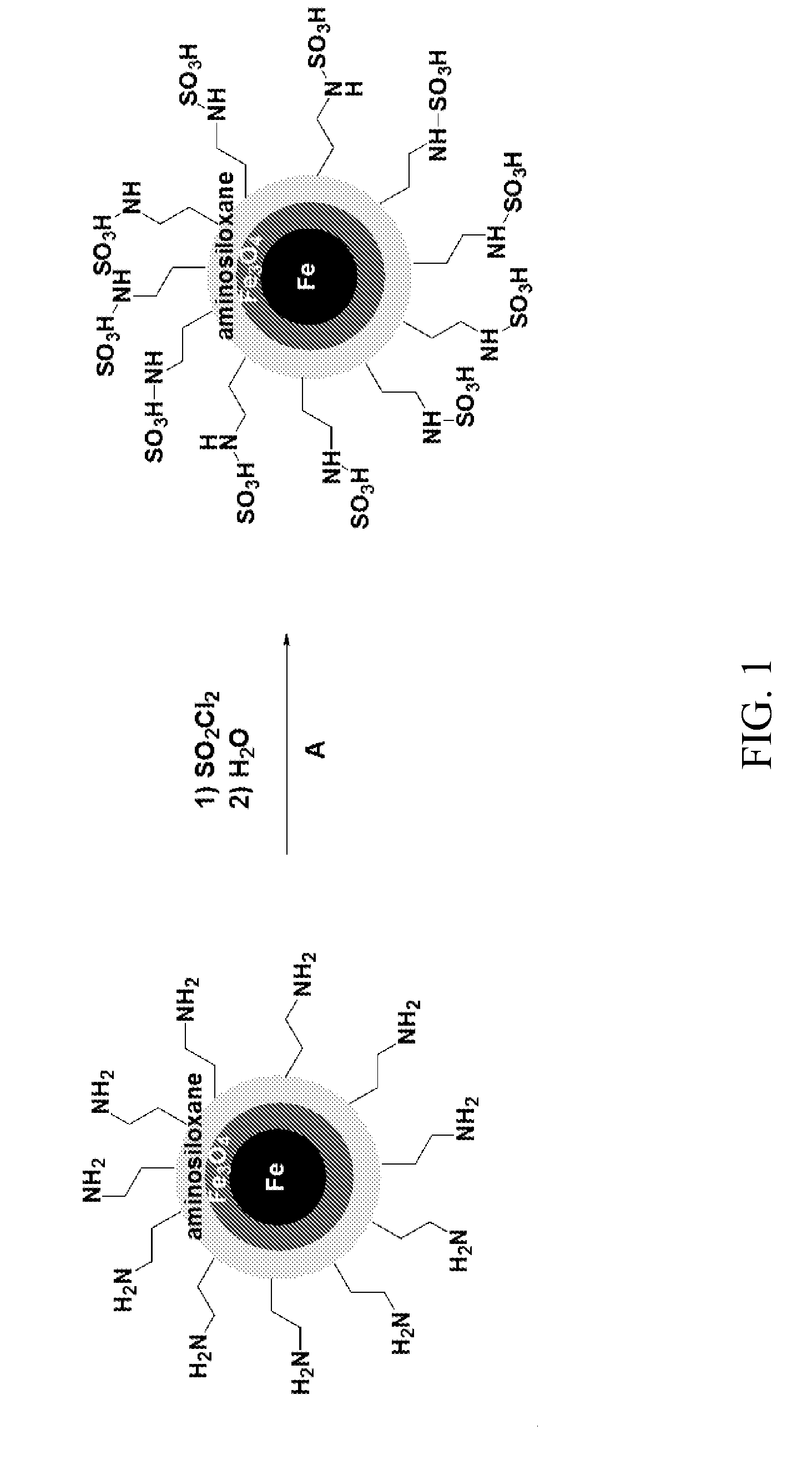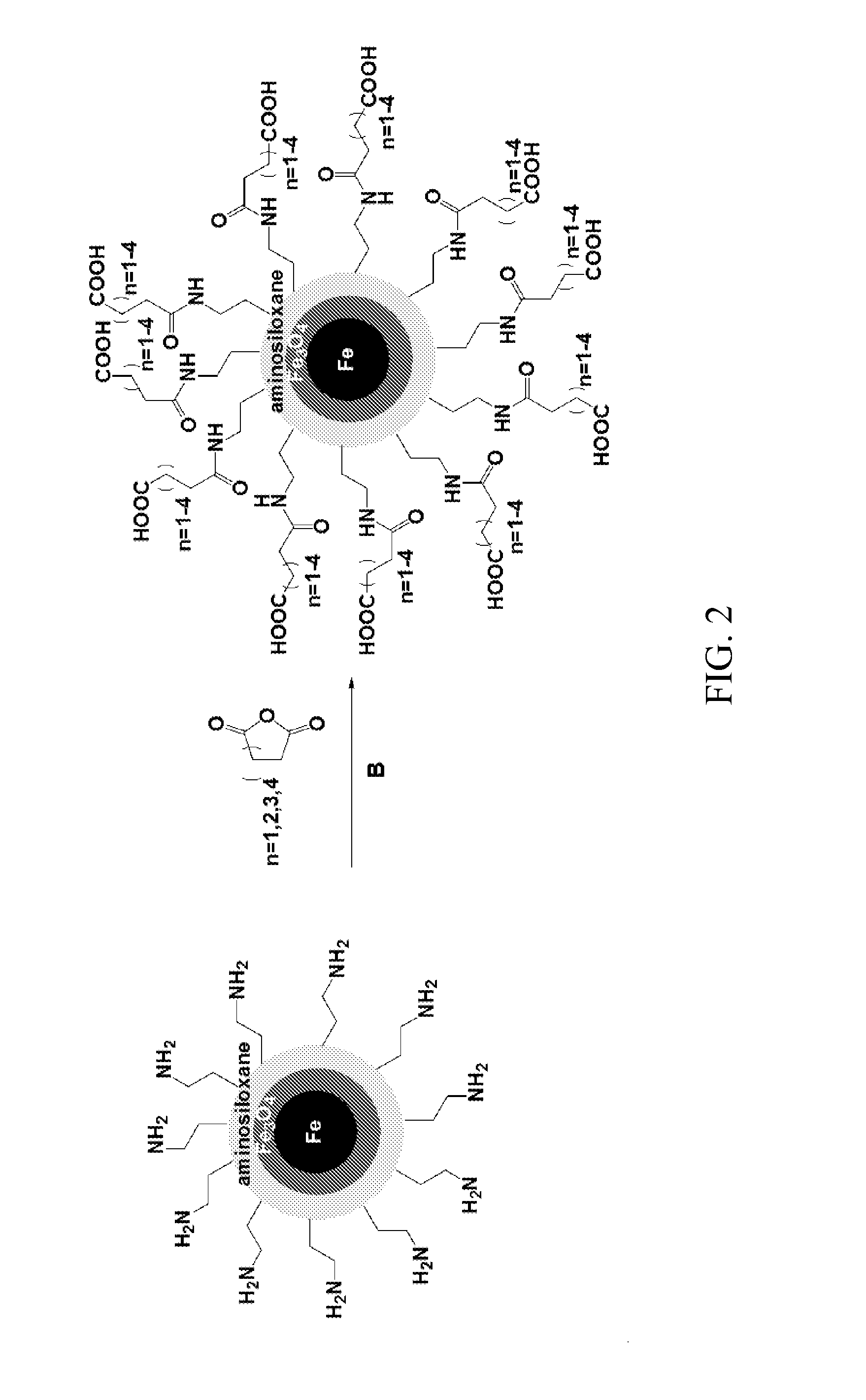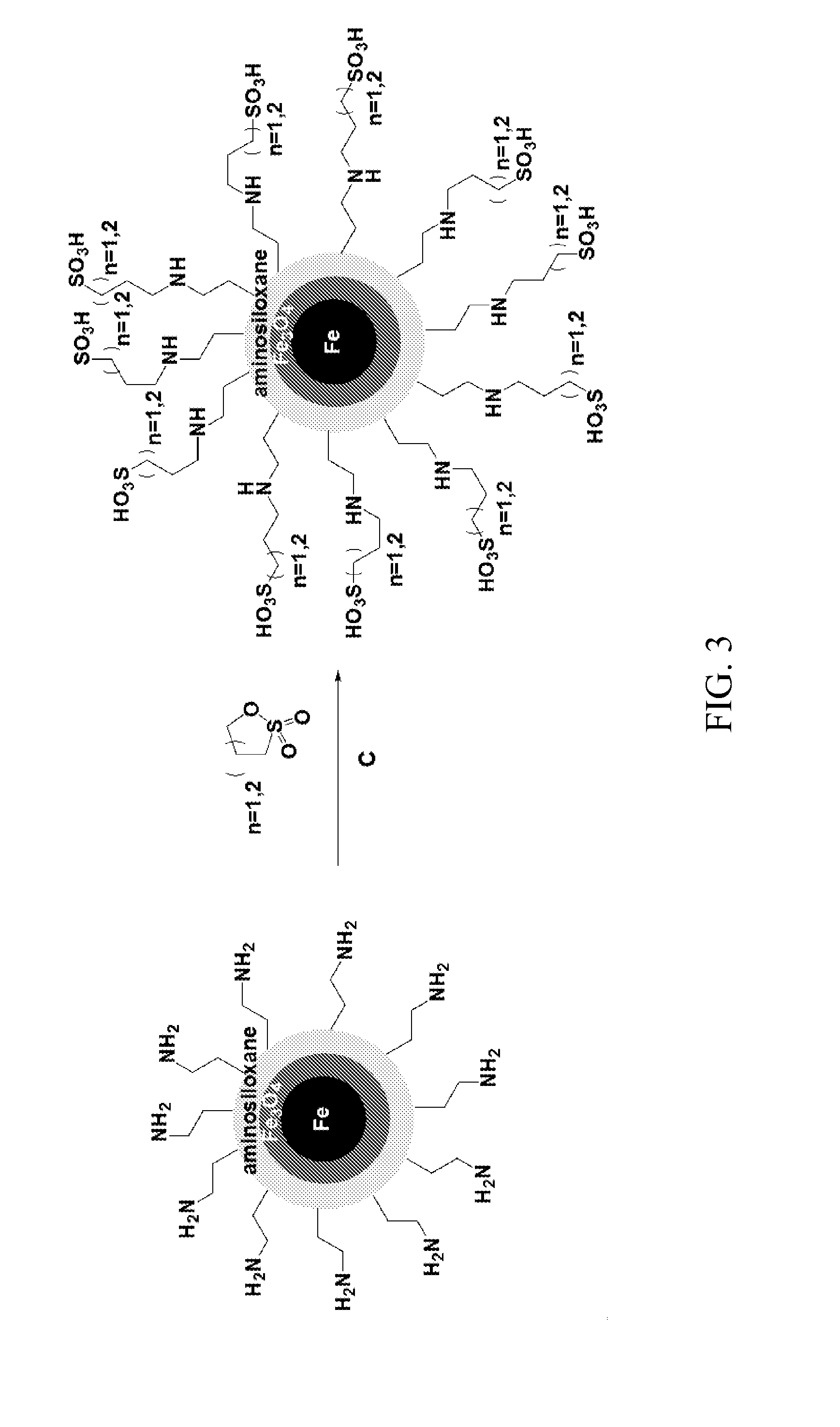Acid-functionalized nanoparticle catalyst and catalyzed reactions using the same
a nanoparticle catalyst and acid-functionalized technology, applied in the direction of catalyst regeneration/reactivation, organic-compound/hydride/coordination-complex catalyst, physical/chemical process catalyst, etc., can solve the problem of low reaction selectivity, low conversion yield (residual epoxide), homogeneous distribution and oligomerization, etc. problem, to achieve the effect of hydrolysis of cellulosic materials
- Summary
- Abstract
- Description
- Claims
- Application Information
AI Technical Summary
Problems solved by technology
Method used
Image
Examples
example 1
A. Preparation of Monodisperse Fe Nanoparticles
[0046]Iron nanoparticles were prepared by extensive modification of a procedure described by Peng et al., J. Am. Chem. Soc., 2006, 128, 10676-10677. 20 mL octadecene and 0.3 mL oleylamine were added to a 100 mL Schlenk flask and heated to 120° C. under Argon (Ar) for 30 minutes. After raising the temperature to 180° C., 0.7 mL Fe(CO)5 was added under Ar. The solution turned black within 3 minutes and was kept at 180° C. for 20 minutes before cooling to room temperature. Under Ar, the supernatant was transferred to a centrifuge tube. Iron nanoparticles accumulated on the stir bar were washed with degassed hexane (3×10 mL) and combined with the supernatant. Next, 50 mL of degassed absolute ethanol was added and mixed thoroughly. Nanoparticles were collected by centrifugation (8000 rpm for 30 min). After decanting the clear solvent, the nanoparticles were re-dispersed into 15 mL degassed hexane and precipitated out by adding 20 mL of absol...
example 2
[0056]In this example, alternate methods of preparing superparamagentic core / shell Fe / Fe3O4 nanoparticles are described.
[0057]A. Preparation of Fe / Fe3O4 Nanoparticles Using Fe(CO)5 and 1-Methyl-3-Tetradecylimidazolium Bromide
[0058]A 500 mL three necked round-bottom-flask equipped with mechanical stirrer, cold water jacked condenser, and temperature probe was charged with 250 mL octyldecene, 3.75 mL oleylamine, 4.48 g 1-methyl-3-tetradecylimidazolium bromide. The reaction mixture was degassed with argon flow at 160° C. for 30 min, and then heated to 200° C. 10 mL of Fe(CO)5 was added via a syringe within 2 min. The reaction mixture was kept at 200° C. with stirring for another 40 min. Upon cooling to room temperature, nanoparticles were collected by centrifugation. After washing with hexane and ethanol, the obtained product was dried in vacuum and stored at room temperature. Based on iron, the yield of the reaction is 87%. The XRD characterization of the nanoparticles provided as FIG...
example 3
[0062]This example describes alternate methods of providing an acid functionalized siloxane coating on the nanoparticles.
[0063]A. Preparation of Sulfonic Acid-Functionalized Mercaptosiloxane-Coated Fe / Fe3O4 Nanoparticles Using Fe(CO)5 in Oleylamine and Octadecene
[0064]Fe / Fe3O4 nanoparticles prepared as described in A and B of Example 1. The formed nanoparticles were precipitated by applying a strong magnet, and the supernatant was decanted under the protection of argon stream. The collected nanoparticles were washed several times with hexane to remove the excess ligands. 200 mg of the Fe / Fe3O4 nanoparticles were reacted with 0.4 mL of 3-mercaptopropyl-trimethoxysilane and 10 μL of acetic acid. After washing with hexane, ethanol and methanol, H2O2 was added. The formed nanoparticles were again purified by subsequent water washings and sonicated with H2SO4 for 10 min. The final product was further washed with water, and dried under high vacuum. The acid loading was determined by acid / ...
PUM
| Property | Measurement | Unit |
|---|---|---|
| particle diameter | aaaaa | aaaaa |
| temperature | aaaaa | aaaaa |
| temperature | aaaaa | aaaaa |
Abstract
Description
Claims
Application Information
 Login to View More
Login to View More - R&D
- Intellectual Property
- Life Sciences
- Materials
- Tech Scout
- Unparalleled Data Quality
- Higher Quality Content
- 60% Fewer Hallucinations
Browse by: Latest US Patents, China's latest patents, Technical Efficacy Thesaurus, Application Domain, Technology Topic, Popular Technical Reports.
© 2025 PatSnap. All rights reserved.Legal|Privacy policy|Modern Slavery Act Transparency Statement|Sitemap|About US| Contact US: help@patsnap.com



